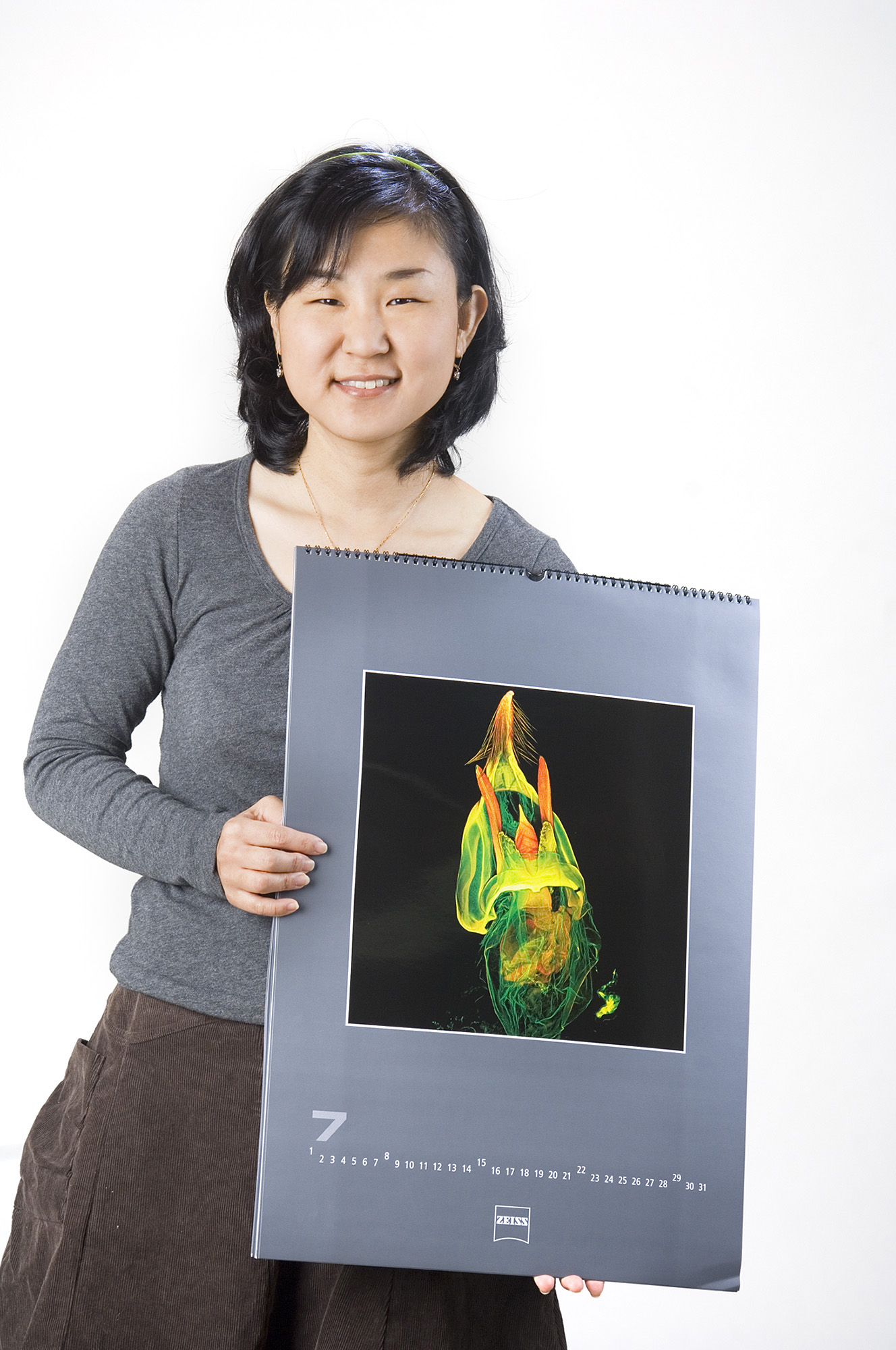Contact: Phil Hearn

Photo by: Megan Bean
STARKVILLE, Miss.--A microscopic image captured by a Mississippi State doctoral student in entomology is appearing in a 2007 calendar that will be viewed by scientists, engineers and others throughout the world.
Graduate research assistant Sangmi Lee's image of the reproductive structures of a new species of gelechiid moth is among only four U.S. images and eight others from five foreign countries chosen for the Zeiss Inc. 2007 calendar.
"Zeiss Inc. is the most respected company in optical microscopy and imaging," said Giselle Thibaudeau, director of the university's Electron Microscope Center, where Lee's work was conducted.
"Zeiss is known by scientists throughout the world, whether in academia or industry," added Thibaudeau, an associate professor of biological sciences. "Sangmi's achievement is an international recognition of the quality of images that we are capable of acquiring with state-of-the-art instrumentation at MSU."
A native of South Korea, Lee said her winning moth image was acquired with a Zeiss Confocal Laser Scanning Microscope 510 that was being demonstrated at the EMC last summer. The microscope will be permanently located at the EMC in January.
Other winning images from the U.S. were submitted from Northwestern University and West Virginia universities, as well as the Hutchinson Cancer Research Center in Seattle, Wash.
Images by scientists in Germany, Poland, England, India, and Japan also were chosen to round out the 2007 calendar.
"Zeiss was very impressed with the image generated at the EMC and contacted Thibaudeau to get permission to use it in the 2007 calendar to be distributed worldwide," said Lee. "The 12 calendar images are chosen by company representatives who work with many universities and research institutes around the world."
Lee said the taxonomy of moths depends on dissections and slide mounts of male reproductive structures for describing the species. Her image was cleaned of scales with a small camel's hair brush, stained with a red color, and mounted in a euparol medium on a microscope slide.
"Most images of the genitalia are made with other kinds of cameras and microscopes, and this is the first image of this group of moths to be made with a confocal microscope--and is in 3D," she explained.
"The confocal microscope is state-of-the-art and often is cost-prohibitive, so many universities don't have them," added Lee.
She is performing her graduate research under the supervision of Richard Brown, MSU professor of entomology and plant pathology, and director of the Mississippi Entomological Museum.
"Sangmi is the only person in this country working on this group of moths, and the quality of her work with these very small moths--measuring a few millimeters in size--has set a standard at the world level," said Brown, who supports Lee's research through funding obtained from the National Science Foundation.
Lee said she also plans to use the Zeiss image for a poster she will present at an upcoming national entomological society meeting, at which she also will present her doctoral dissertation.
"I am very happy that my image is one that Zeiss wants to be on their calendar," she said. "They see so many beautiful images of stained cells and tissues of plants and animals around the world."
Earlier, Lee received an honorable mention award in the Olympus Bioscapes International Imaging Competition for another confocal image of a moth head. More than 1,200 images from around the world were submitted for that competition.
MSU's Electron Microscope Center is a campus-wide research core facility that supports and strengthens the university's teaching, research and service missions. Its primary purpose is to provide the academic and research communities with access to state-of-the-art instrumentation related to light and electron microscopy.
"The EMC instrumentation and staff have been instrumental in enabling many faculty and student researchers to approach and answer research questions that require high magnification and high-resolution imaging," said Thibaudeau.
"Most notable of late are images acquired using the confocal laser scanning microscope system available at the EMC," she added.
NEWS EDITORS/DIRECTORS: For more information, contact Dr. Thibaudeau at 662-325-3017 or Giselle@emcenter.msstate.edu; Dr. Brown at 325-2085 or moth@ra.msstate.edu; or Lee at 325-2990 or sl161@entomology.msstate.edu.
For more information about Mississippi State University, see http://www.msstate.edu/